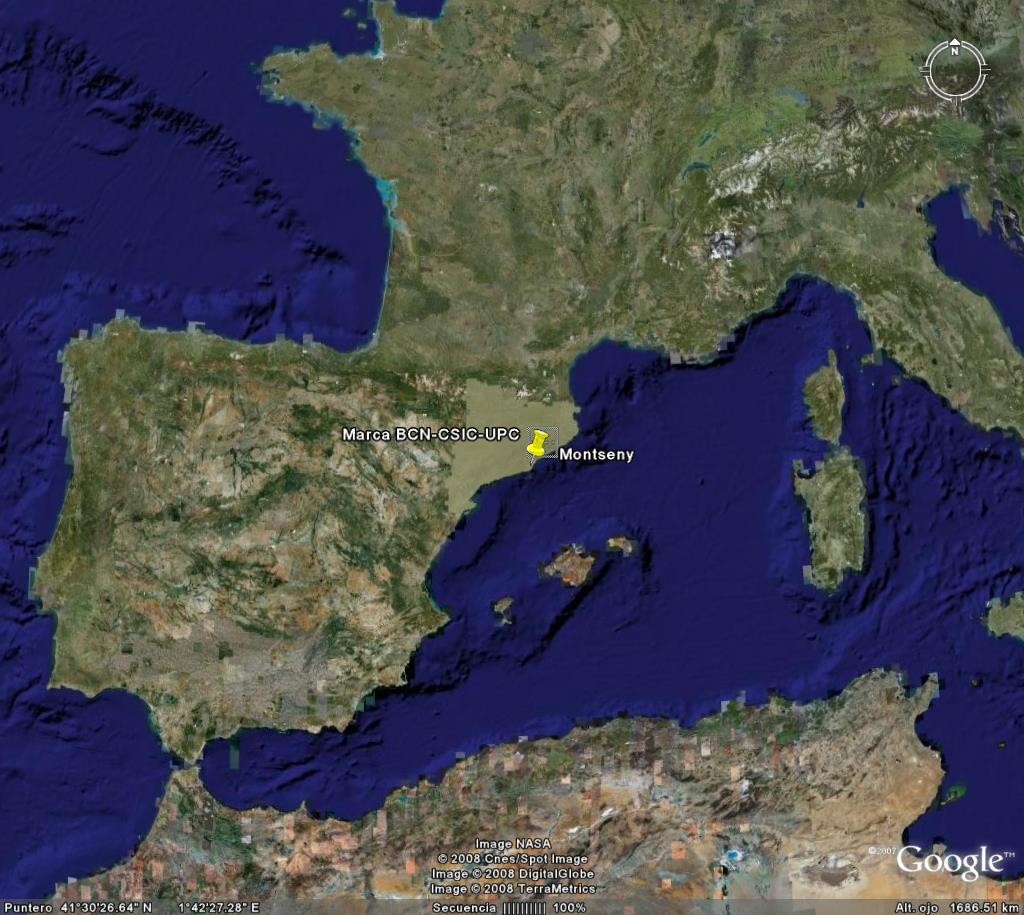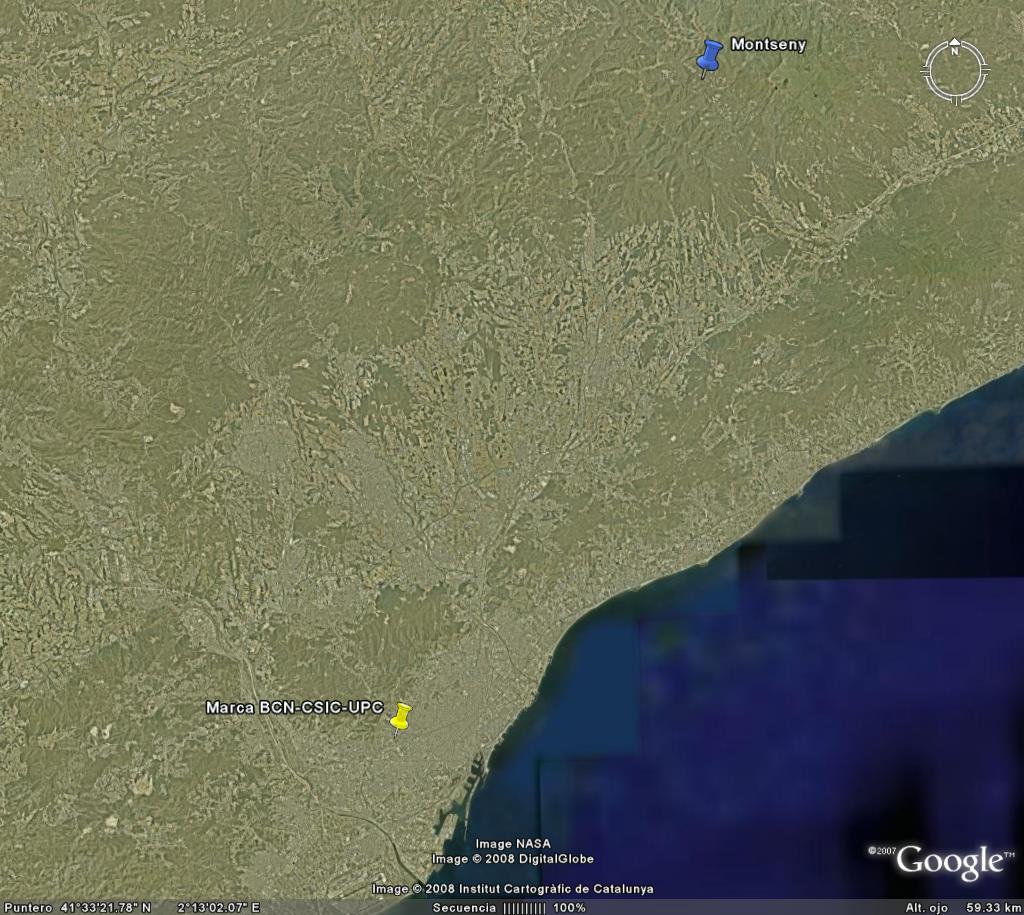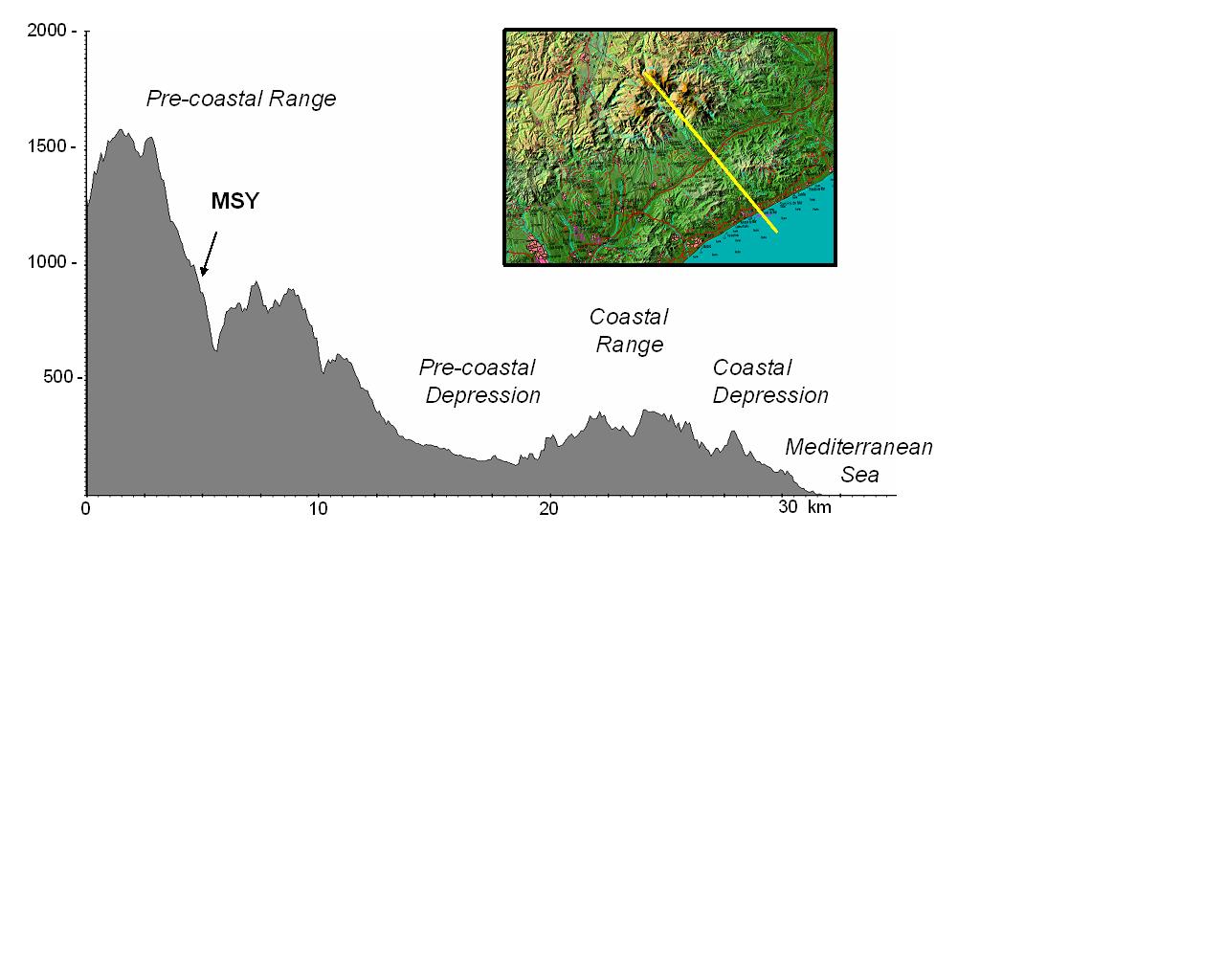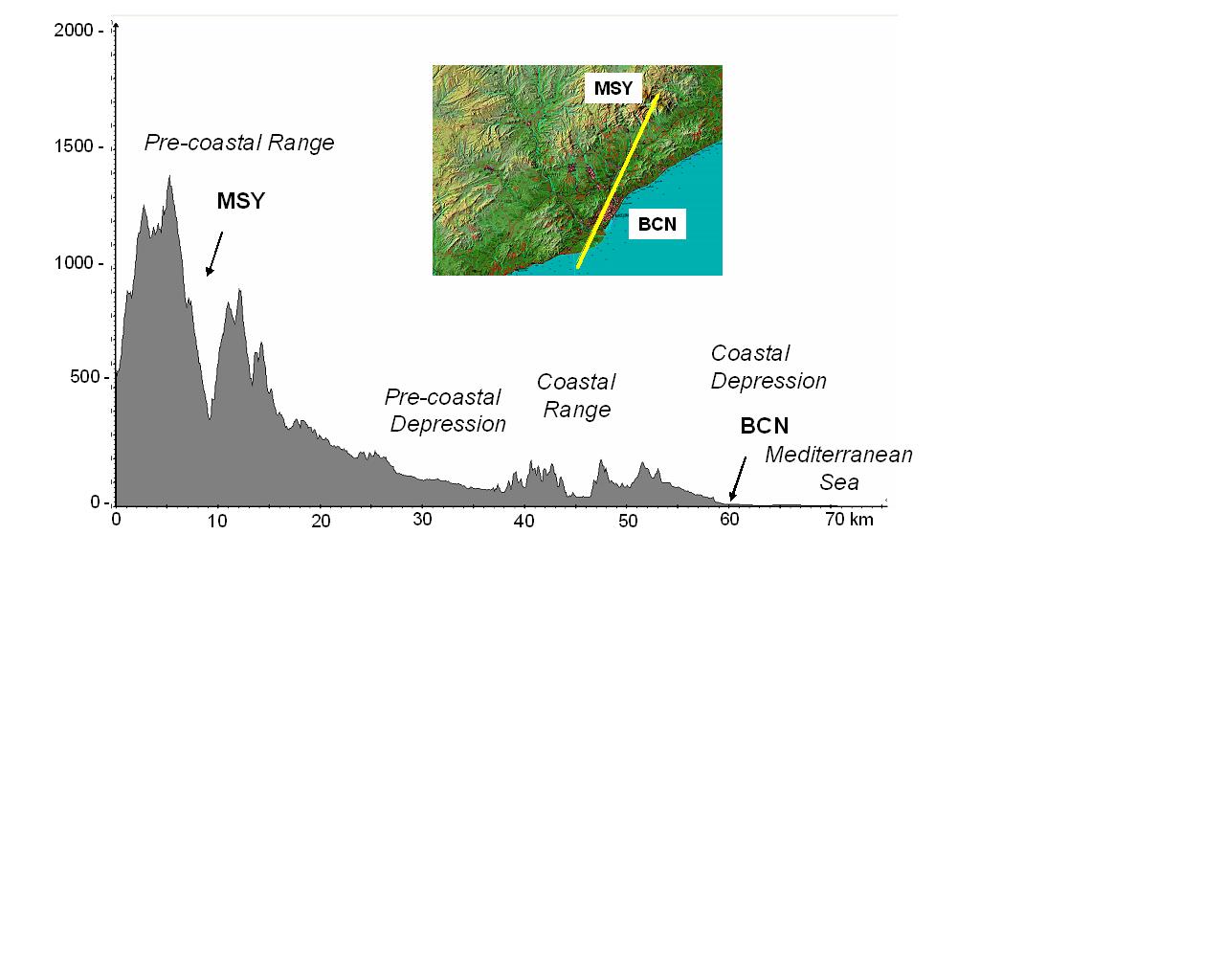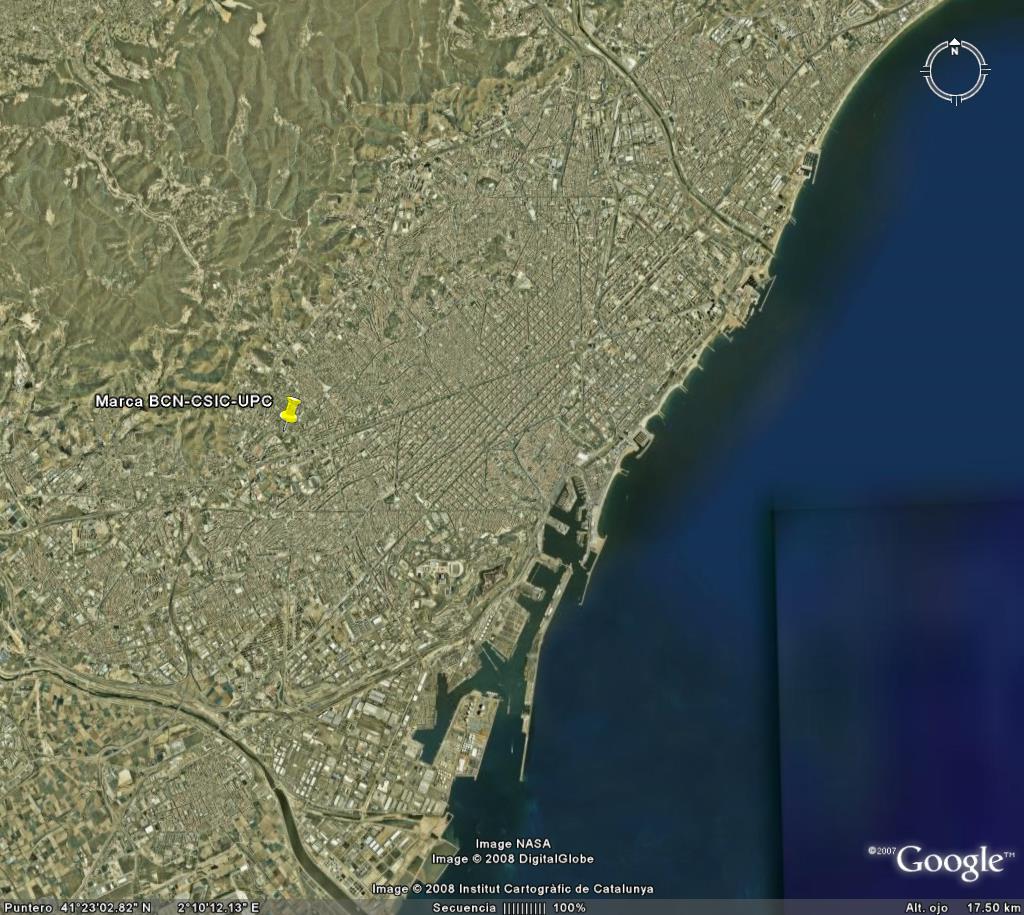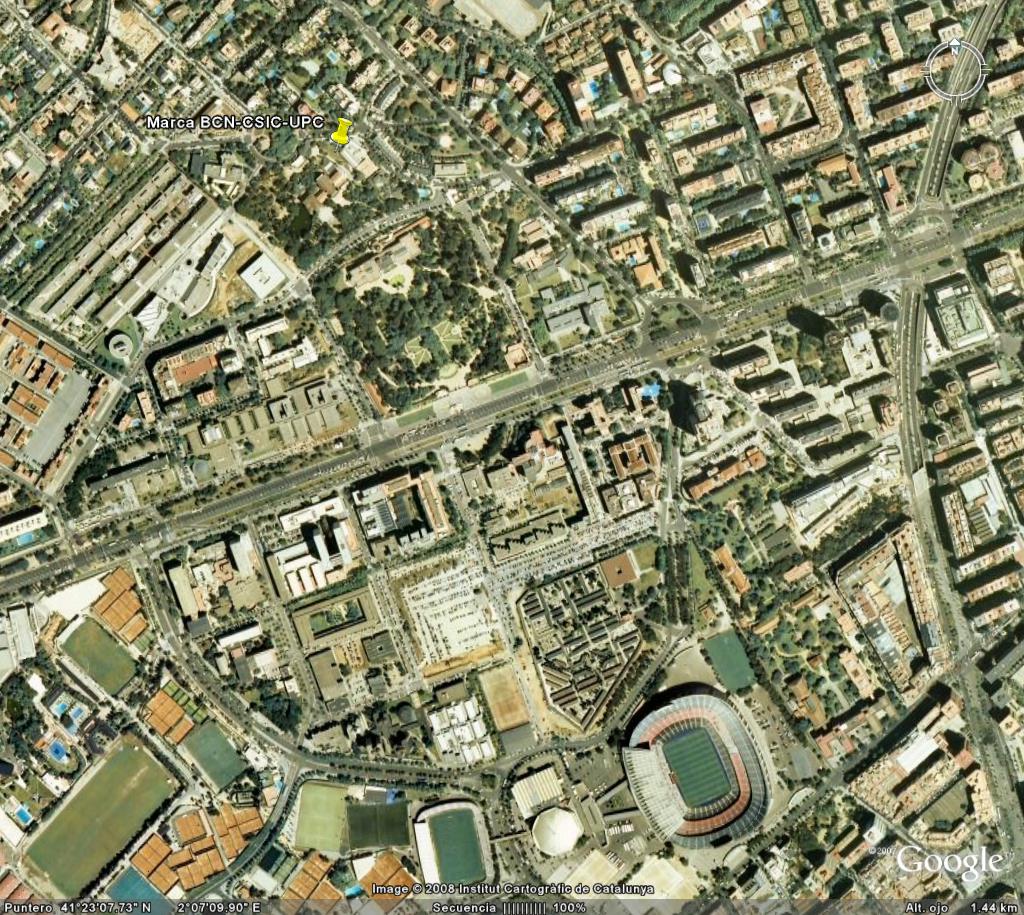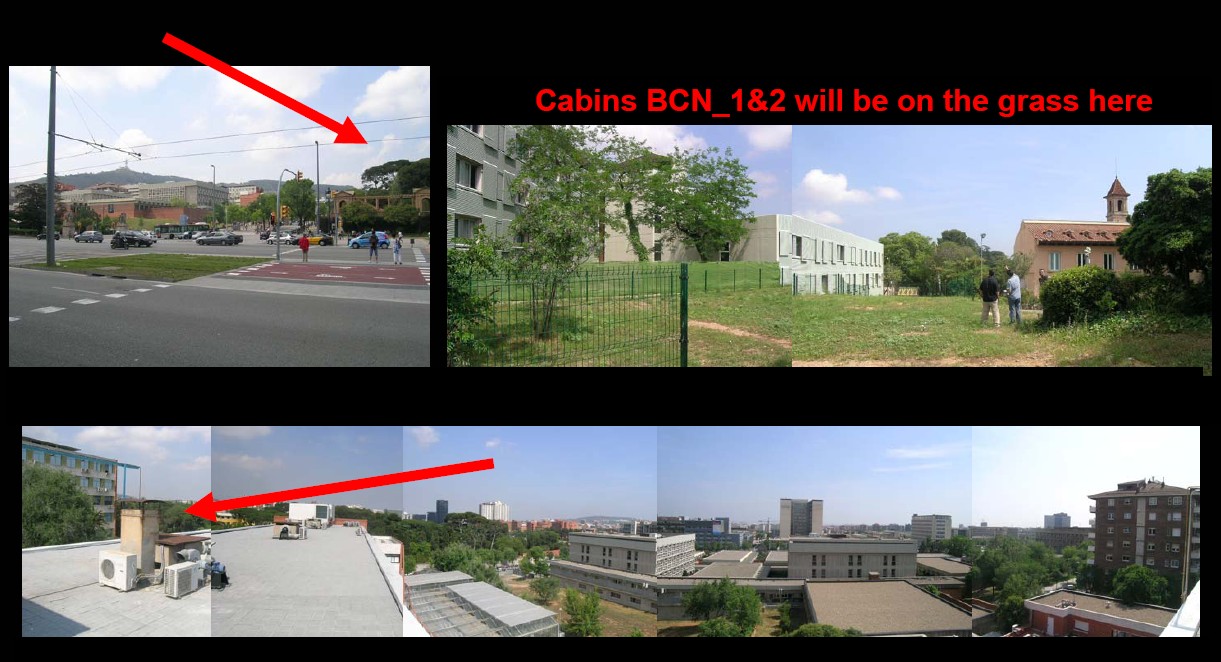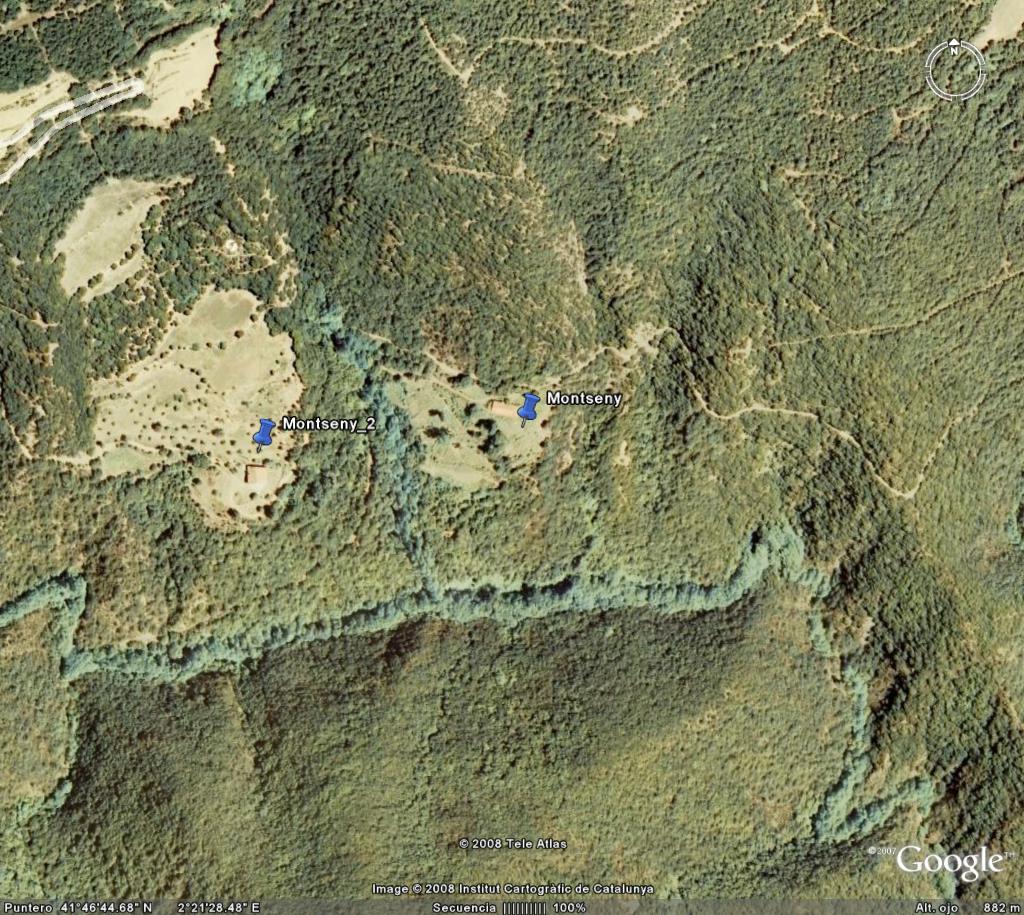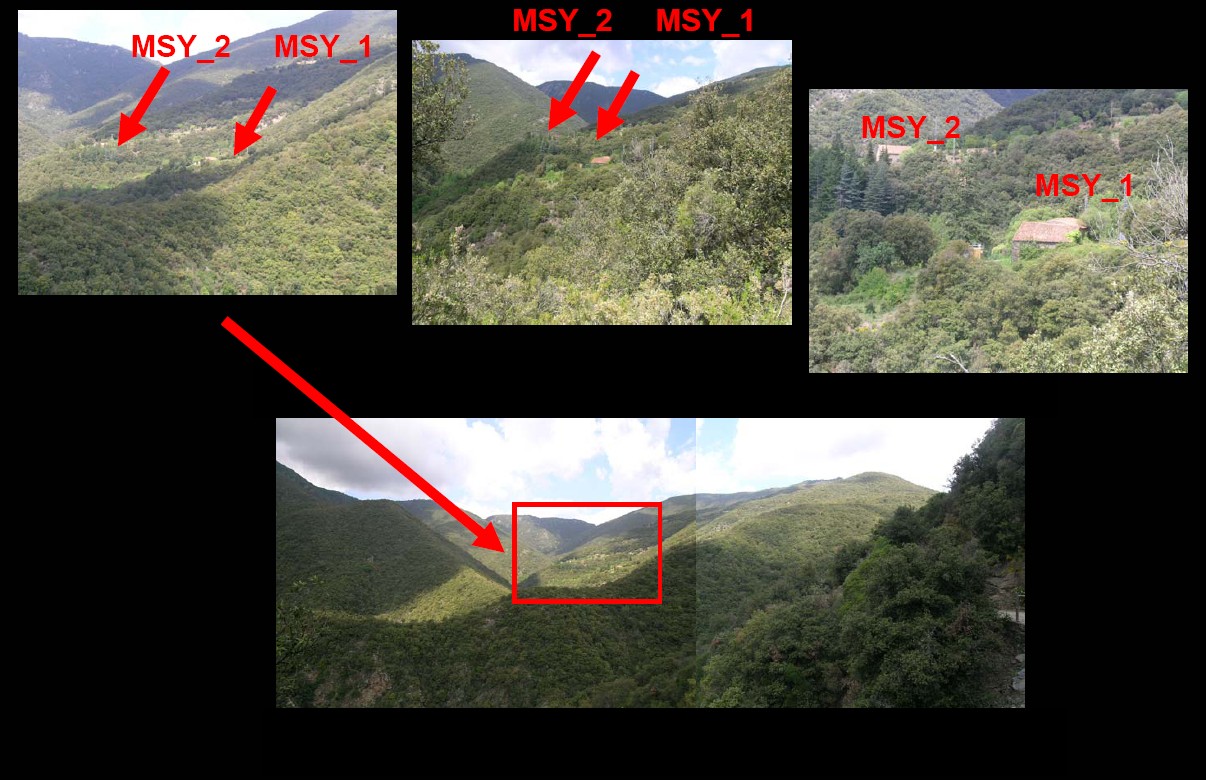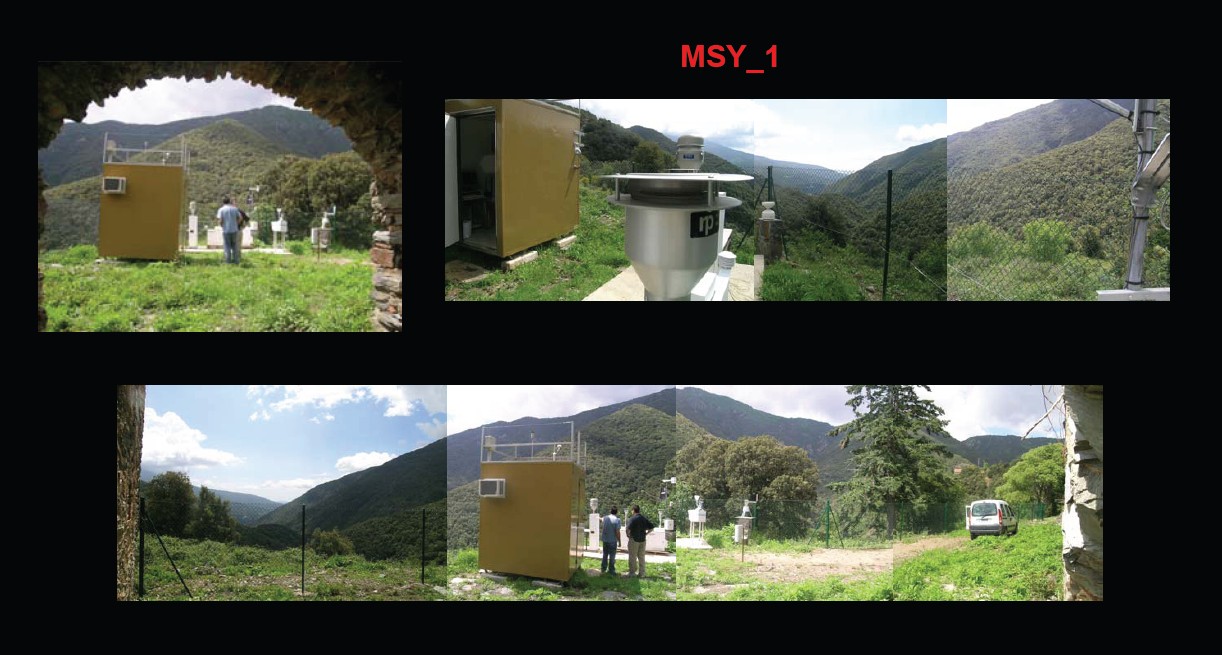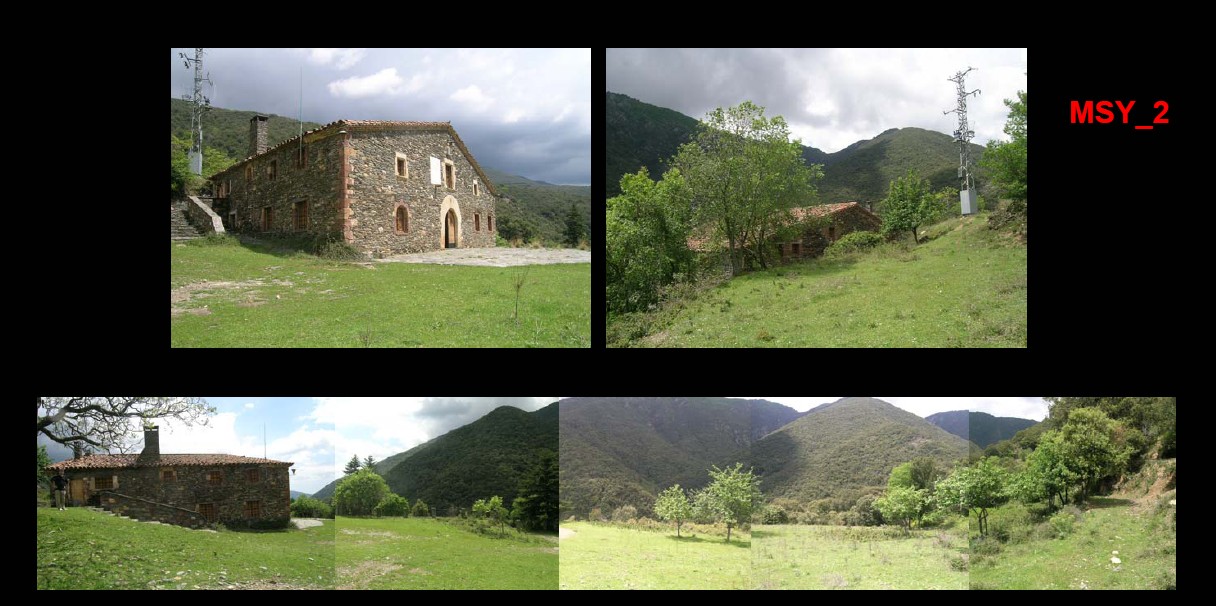Difference between revisions of "DAURE"
(→Submitted Papers) |
(→Published Papers) |
||
| Line 32: | Line 32: | ||
* Llusia J, Peñuelas J, Seco R, Filella I. [http://dx.doi.org/10.1007/s10874-012-9238-1 Seasonal changes in the daily emission rates of terpenes by Quercus ilex and the atmospheric concentrations of terpenes in the natural park of Montseny, NE Spain]. Journal of Atmospheric Chemistry, 69 (3): 215-230, 2012. | * Llusia J, Peñuelas J, Seco R, Filella I. [http://dx.doi.org/10.1007/s10874-012-9238-1 Seasonal changes in the daily emission rates of terpenes by Quercus ilex and the atmospheric concentrations of terpenes in the natural park of Montseny, NE Spain]. Journal of Atmospheric Chemistry, 69 (3): 215-230, 2012. | ||
| + | |||
| + | * R. Seco, J. Peñuelas, I. Filella, J. Llusia, S. Schallhart, A. Metzger, M. Müller, and A. Hansel: [https://www.atmos-chem-phys.net/13/4291/2013 Volatile organic compounds in the Western Mediterranean Basin: urban and rural winter measurements during the DAURE campaign], Atmos. Chem. Phys., 13, 4291-4306, doi.org/10.5194/acp-13-4291-2013, 2013 | ||
* M. Crippa, F. Canonaco, V.A. Lanz, M. Äijälä, J.D. Allan, S. Carbone, G. Capes, M. Dall’Osto, D.A. Day, P.F. DeCarlo, M. Ehn, A. Eriksson, E. Freney, L. Hildebrandt Ruiz, R. Hillamo, J.L. Jimenez, H. Junninen, A. Kiendler-Scharr, A.-M. Kortelainen, M. Kulmala, A. Laaksonen, A.A. Mensah, C. Mohr, E. Nemitz, C. O'Dowd, J. Ovadnevaite, S.N. Pandis, T. Petäjä, L. Poulain, S. Saarikoski, K. Sellegri, E. Swietlicki, P. Tiitta, D.R. Worsnop, U. Baltensperger, and A.S.H. Prévôt. [https://www.atmos-chem-phys.net/14/6159/2014 Organic aerosol components derived from 25 AMS data sets across Europe using a consistent ME-2 based source apportionment approach]. Atmospheric Chemistry and Physics, 14, 6159-6176, doi:10.5194/acp-14-6159-2014, 2014. | * M. Crippa, F. Canonaco, V.A. Lanz, M. Äijälä, J.D. Allan, S. Carbone, G. Capes, M. Dall’Osto, D.A. Day, P.F. DeCarlo, M. Ehn, A. Eriksson, E. Freney, L. Hildebrandt Ruiz, R. Hillamo, J.L. Jimenez, H. Junninen, A. Kiendler-Scharr, A.-M. Kortelainen, M. Kulmala, A. Laaksonen, A.A. Mensah, C. Mohr, E. Nemitz, C. O'Dowd, J. Ovadnevaite, S.N. Pandis, T. Petäjä, L. Poulain, S. Saarikoski, K. Sellegri, E. Swietlicki, P. Tiitta, D.R. Worsnop, U. Baltensperger, and A.S.H. Prévôt. [https://www.atmos-chem-phys.net/14/6159/2014 Organic aerosol components derived from 25 AMS data sets across Europe using a consistent ME-2 based source apportionment approach]. Atmospheric Chemistry and Physics, 14, 6159-6176, doi:10.5194/acp-14-6159-2014, 2014. | ||
Revision as of 23:07, 1 January 2018
An easy to remember shortcut to this page is http://tinyurl.com/daure09.
This Wiki is a repository of information about the DAURE field campaign to be conducted at an urban/rural site pair in Barcelona and Montseny (Catalonia, Spain) in winter and summer 2009. This is the main page about the study and focuses on the scientific aspects of the study. We have another Wiki page for the logistics and organization of the study.
Contents
- 1 Objectives
- 2 Papers from DAURE
- 3 Participant Groups
- 4 DAURE Science Meetings
- 5 DAURE-related Presentations at Conferences
- 6 Tentative List of Journal Papers w/ DAURE data
- 7 Data policy
- 8 Data Server
- 9 Data from Monitoring Networks and Other Sources
- 10 Results from Previous Research
- 11 Sites
- 12 Instrumentation (only winter campaign)
- 13 Media Coverage
- 14 Funding and Acknowledgements
Objectives
DAURE stands for "Determination of the sources of atmospheric Aerosols in Urban and Rural Environments in the western Mediterranean" and also for "Determinacion de origenes del Aerosol atmosferico en ambiente Urbano y Rural del Mediterraneo occidental". The objectives of the DAURE campaign is to characterize the sources of fine aerosols in the Barcelona region, with particular attention to carbonaceous aerosols.
State-of-the-Art methods such as 14C and HR-ToF-AMS analysis have been applied or are starting to be applied to the source apportionment problem in Central Europe, but not yet in the Mediterranean region. There are reasons to believe that the results from Central Europe (dominance of biogenic and biomass burning in the organic aerosol) may not be directly translatable to the Mediterranean, and this campaign is a unique opportunity to evaluate this hypothesis (CSIC, UC, PSI, CEH, BSC, UPC,CIEMAT, UB, UGR, and other participant groups). Furthermore, Biogenic Volatile Organic Compounds emissions and concentrations in Barcelona and Montseny and their implications as sources of aerosols will be also investigated (CREAF).
The campaign is also part of the EMEP Coordinated Winter Campaign, and is carried out in collaboration with the EUCAARI European project.
- Pictures from the campaign are posted here
Papers from DAURE
Published Papers
- Amato, F., Viana, M., Richard, A., Furger, M., Prévôt, A. S. H., Nava, S., Lucarelli, F., Bukowiecki, N., Alastuey, A., Reche, C., Moreno, T., Pandolfi, M., Pey, J., and Querol, X.: Size and time-resolved roadside enrichment of atmospheric particulate pollutants, Atmos. Chem. Phys., 11, 2917-2931, doi:10.5194/acp-11-2917-2011, 2011.
- Moreno, T., Querol, X., Alastuey, A., Reche, C., Cusack, M., Amato, F., Pandolfi, M., Pey, J., Richard, A., Prévôt, A. S. H., Furger, M., and Gibbons, W.: Variations in time and space of trace metal aerosol concentrations in urban areas and their surroundings, Atmos. Chem. Phys., 11, 9415-9430, doi:10.5194/acp-11-9415-2011, 2011.
- Seco, R., Peñuelas, J., Filella, I., Llusià, J., Molowny-Horas, R., Schallhart, S., Metzger, A., Müller, M., and Hansel, A.: Contrasting winter and summer VOC mixing ratios at a forest site in the Western Mediterranean Basin: the effect of local biogenic emissions, Atmos. Chem. Phys., 11, 13161-13179, doi:10.5194/acp-11-13161-2011, 2011.
- Knote, C., Brunner, D., Vogel, H., Allan, J., Asmi, A., Äijälä, M., Carbone, S., van der Gon, H. D., Jimenez, J. L., Kiendler-Scharr, A., Mohr, C., Poulain, L., Prévôt, A. S. H., Swietlicki, E., and Vogel, B.: Towards an online-coupled chemistry-climate model: evaluation of COSMO-ART, Geosci. Model Dev., 4, 1077-1102, doi:10.5194/gmd-4-1077-2011, 2011.
- M.C. Minguillon, N. Perron, X. Querol, S. Szidat, S.M. Fahrni, A. Alastuey, J.L. Jimenez, C. Mohr, A.M. Ortega, D.A. Day, V.A. Lanz, L. Wacker, C. Reche, M. Cusack, F. Amato, G. Kiss, A. Hoffer, S. Decesari, F. Moretti, R. Hillamo, K. Teinila, R. Seco, J. Penuelas, A. Metzger, S. Schallhart, M. Muller, A. Hansel, J.F. Burkhart, U. Baltensperger, and A.S.H. Prevot. Fossil versus contemporary sources of fine elemental and organic carbonaceous particulate matter during the DAURE campaign in Northeast Spain, Atmos. Chem. Phys., 11, 12067-12084, doi:10.5194/acp-11-12067-2011, 2011.
- C. Mohr, P.F. DeCarlo, M.F. Heringa, R. Chirico, J.G. Slowik, R. Richter, C. Reche, A. Alastuey, X. Querol, R. Seco, J. Peñuelas, J.L. Jimenez, M. Crippa, R. Zimmermann, U. Baltensperger, and A.S.H. Prevot. Identification and quantification of organic aerosol from cooking and other sources in Barcelona using aerosol mass spectrometer data. Atmospheric Chemistry and Physics, 12, 1649-1665, doi:10.5194/acp-12-1649-2012, 2012.
- B.L. van Drooge, M. Crusack, C. Reche, C. Mohr, A. Alastuey, X. Querol, A. Prevot, D.A. Day, J.L. Jimenez, and J.O. Grimalt. Molecular marker characterization of the organic composition of submicron aerosols from Mediterranean urban and rural environments under contrasting meteorological conditions. Atmospheric Environment, 61: 482-489, doi:10.1016/j.atmosenv.2012.07.039, 2012.
- Llusia J, Peñuelas J, Seco R, Filella I. Seasonal changes in the daily emission rates of terpenes by Quercus ilex and the atmospheric concentrations of terpenes in the natural park of Montseny, NE Spain. Journal of Atmospheric Chemistry, 69 (3): 215-230, 2012.
- R. Seco, J. Peñuelas, I. Filella, J. Llusia, S. Schallhart, A. Metzger, M. Müller, and A. Hansel: Volatile organic compounds in the Western Mediterranean Basin: urban and rural winter measurements during the DAURE campaign, Atmos. Chem. Phys., 13, 4291-4306, doi.org/10.5194/acp-13-4291-2013, 2013
- M. Crippa, F. Canonaco, V.A. Lanz, M. Äijälä, J.D. Allan, S. Carbone, G. Capes, M. Dall’Osto, D.A. Day, P.F. DeCarlo, M. Ehn, A. Eriksson, E. Freney, L. Hildebrandt Ruiz, R. Hillamo, J.L. Jimenez, H. Junninen, A. Kiendler-Scharr, A.-M. Kortelainen, M. Kulmala, A. Laaksonen, A.A. Mensah, C. Mohr, E. Nemitz, C. O'Dowd, J. Ovadnevaite, S.N. Pandis, T. Petäjä, L. Poulain, S. Saarikoski, K. Sellegri, E. Swietlicki, P. Tiitta, D.R. Worsnop, U. Baltensperger, and A.S.H. Prévôt. Organic aerosol components derived from 25 AMS data sets across Europe using a consistent ME-2 based source apportionment approach. Atmospheric Chemistry and Physics, 14, 6159-6176, doi:10.5194/acp-14-6159-2014, 2014.
- K. Tsigaridis, N. Daskalakis, M. Kanakidou, P.J. Adams, P. Artaxo, R. Bahadur, Y. Balkanski, S.E. Bauer, N. Bellouin, A. Benedetti, T. Bergman, T.K. Berntsen, J.P. Beukes, H. Bian, K.S. Carslaw, M. Chin, G. Curci, T. Diehl, R. C. Easter, S.J. Ghan, S.L. Gong, A. Hodzic, C.R. Hoyle, T. Iversen, S. Jathar, J.L. Jimenez, J.W. Kaiser, A. Kirkevåg, D. Koch, H. Kokkola, Y.H. Lee, G. Lin, X. Liu, G. Luo, X. Ma, G.W. Mann, N. Mihalopoulos, J.-J. Morcrette, J.-F. Müller, G. Myhre, S. Myriokefalitakis, S. Ng, D. O’Donnell, J.E. Penner, L. Pozzoli, K.J. Pringle, L.M. Russell, M. Schulz, J. Sciare, Ø. Seland, D.T. Shindell, S. Sillman, R.B. Skeie, D. Spracklen, T. Stavrakou, S.D. Steenrod, T. Takemura, P. Tiitta, S. Tilmes, H. Tost, T. van Noije, P.G. van Zyl, K. von Salzen, F. Yu, Z. Wang, Z. Wang, R.A. Zaveri, H. Zhang, K. Zhang, Q. Zhang, X. Zhang. The AeroCom evaluation and intercomparison of organic aerosol in global models. Atmospheric Chemistry and Physics, 14, 10845-10895, doi:10.5194/acp-14-10845-2014, 2014.
- M. Pandolfi, X. Querol, A. Alastuey, J.L. Jimenez, O. Jorba, D. Day, A. Ortega, M.J. Cubison, A. Comerón, M. Sicard, C. Mohr, A.S.H. Prévôt, M.C. Minguillón, J. Pey, J.M. Baldasano, J.F. Burkhart, R. Seco, J. Peñuelas, B.L. van Drooge , B. Artiñano, C. Di Marco, E. Nemitz, S. Schallhart, A. Metzger, A. Hansel, J. Llorente, S. Ng, J. Jayne, S. Szidat. Effects of Sources and Meteorology on Particulate Matter in the Western Mediterranean Basin: An overview of the DAURE campaign. Journal of Geophysical Research-Atmospheres, 119, 4978–5010, doi:10.1002/2013JD021079, 2014.
- C. Mohr, P.F. DeCarlo, M.F. Heringa, R. Chirico, R. Richter, M. Crippa, X. Querol, U. Baltensperger, A.S.H. Prévôt. Spatial Variation of Aerosol Chemical Composition and Organic Components Identified by Positive Matrix Factorization in the Barcelona Region. Environmental Science and Technology, 49 (17), 10421–10430, DOI: 10.1021/acs.est.5b02149, 2015.
- Q. Chen, C.L. Heald, J.L. Jimenez, M.R. Canagaratna, Q. Zhang, L.Y. He, X.F. Huang, P. Campuzano-Jost, B.B. Palm, L. Poulain, M. Kuwata, S.T. Martin, J.P.D. Abbatt, Alex K.Y. Lee, J. Liggio. Elemental Composition of Organic Aerosol: The Gap Between Ambient and Laboratory Measurements. Geophysical Research Letters, 42, 4182–4189, doi:10.1002/2015GL063693, 2015.
- W.W. Hu, P. Campuzano-Jost, B.B. Palm, D.A. Day, A.M. Ortega, P.L. Hayes, J.E. Krechmer, Q. Chen, M. Kuwata, Y.J. Liu, S.S. de Sá, K. McKinney, S.T. Martin, M. Hu, S.H. Budisulistiorini, M. Riva, J.D. Surratt, J.M. St. Clair, G. Isaacman-Van Wertz, L.D. Yee, A.H. Goldstein, S. Carbone, J. Brito, P. Artaxo, J.A de Gouw, A. Koss, A. Wisthaler, T. Mikoviny, T. Karl, L. Kaser, W. Jud, A. Hansel, K.S. Docherty, M.L. Alexander, N.H. Robinson, H. Coe, J.D. Allan, M.R Canagaratna, F. Paulot, and J.L. Jimenez. Characterization of a Real-Time Tracer for Isoprene Epoxydiols-Derived Secondary Organic Aerosol (IEPOX-SOA) from Aerosol Mass Spectrometer Measurements. Atmospheric Chemistry and Physics, 15, 11807-11833, doi:10.5194/acp-15-11807-2015, 2015.
- M.R. Canagaratna, J.L. Jimenez, J. Kroll, Q. Chen, S. Kessler, P. Massoli, L. Hildebrandt Ruiz, E. Fortner, L. Williams, K. Wilson, J. Surratt, N. Donahue, J.T. Jayne, and D.R. Worsnop. Elemental Ratio Measurements of Organic Compounds using Aerosol Mass Spectrometry: Characterization, Improved Calibration, and Implications. Atmospheric Chemistry and Physics, 15, 253-272, doi:10.5194/acp-15-253-2015, 2015.
- G. Ciarelli, S. Aksoyoglu, M. Crippa, J.L. Jimenez, E. Nemitz, K. Sellegri, M. Äijälä, S. Carbone, C. Mohr, C. O’Dowd, L. Poulain, U. Baltensperger, and A.S.H. Prévôt Evaluation of European air quality modelled by CAMx including the volatility basis set scheme. Atmos. Chem. Phys., 16, 10313-10332, doi:10.5194/acp-16-10313-2016, 2016.
- A. Kiendler-Scharr, A.A. Mensah, E. Friese, D. Topping, E. Nemitz, A.S.H. Prevot, M. Äijälä, J. Allan, F. Canonaco, M. Canagaratna, S. Carbone, M. Crippa, M. Dall Osto, D. A. Day, P. De Carlo, C.F. Di Marco, H. Elbern, A. Eriksson, E.Freney, L. Hao, H. Herrmann, L. Hildebrandt, R. Hillamo, J.L. Jimenez, A. Laaksonen, G. McFiggans, C. Mohr, C. O’Dowd, R. Otjes, J. Ovadnevaite, S.N. Pandis, L. Poulain, P. Schlag, K. Sellegri, E. Swietlicki, P. Tiitta, A. Vermeulen, A. Wahner, D. Worsnop, and H.-C. Wu. Ubiquity of organic nitrates from nighttime chemistry in the European submicron aerosol. Geophysical Research Letters, 43, 7735–7744, doi:10.1002/2016GL069239, 2016.
- N. Ng, S. Brown, A. Archibald, E. Atlas, R. Cohen, J. Crowley, D. Day, N. Donahue, J. Fry, H. Fuchs, R. Griffin, M. Guzman, H. Hermann, A. Hodzic, Y. Iinuma, J.L. Jimenez, A. Kiendler-Scharr, B. Lee, D. Luecken, J. Mao, R. McLaren, A. Mutzel, H. Osthoff, B. Ouyang, B. Picquet-Varrault, U. Platt, H. Pye, Y. Rudich, R. Schwantes, M. Shiraiwa, J. Stutz, J. Thornton, A. Tilgner, B. Williams, and R. Zaveri. Nitrate radicals and biogenic volatile organic compounds: oxidation, mechanisms and organic aerosol. Atmos. Chem. Phys., 17, 2103-2162, doi:10.5194/acp-17-2103-2017, 2017.
- C. Reddington, K. Carslaw, P. Stier, N. Schutgens, H. Coe, D. Liu, J. Allan, J. Browse, K.J. Pringle, L.A. Lee, M. Yoshioka, J.S. Johnson, L.A. Regayre, D.V. Spracklen, G.W. Mann, A. Clarke, M. Hermann, S. Henning, H. Wex, T.B. Kristensen, W.R. Leaitch, U. Poeschl, D. Rose, M.O. Andreae, J. Schmale, Y. Kondo, N. Oshima, J. Schwarz, A. Nenes, B.E Anderson, G. Roberts, J. Snider, C. Leck, P.K. Quinn, X. Chi, A. Ding, J.L. Jimenez, Q. Zhang. The Global Aerosol Synthesis and Science Project (GASSP): Measurements and modelling to reduce uncertainty. Bulletin of the American Meteorological Society, 98, 1857–1877, doi:10.1175/BAMS-D-15-00317.1, 2017.
Submitted Papers
- O. Jorba, M. Pandolfi, M. Spada, J.M. Baldasano, J. Pey, A. Alastuey, D. Arnold, M. Sicard, B. Artiñano, M.A. Revuelta, and X. Querol: The DAURE field campaign: meteorological overview, Atmos. Chem. Phys. Discuss., 11, 4953-5001, doi:10.5194/acpd-11-4953-2011, 2011.
Participant Groups
- CSIC Host group: The aerosol research group at the Institute of Earth Sciences, CSIC in Barcelona, Spain (PI Xavier Querol)
- Colorado: Jimenez group at the University of Colorado-Boulder, USA (PI J.L. Jimenez)
- CEH: Atmospheric Sciences Dept. at the Centre for Ecology and Hydrology, Edinburg, Scotland, UK (PI Eiko Nemitz)
- PSI: Laboratory for Atmospheric Chemistry at the Paul Scherrer Institut, Switzerland (PI Andre Prevot)
- Innsbruck: Ion Chemistry Group, University of Innsbruck, Austria (PI Armin Hansel)
- BSC: Barcelona Supercomputing Centre, Spain (PI Jose Maria Baldasano)
- CREAF: Penuelas Group, UB and CSIC, Spain (PI Josep Peñuelas). (See acknowledgement below)
- CIEMAT Atmospheric Pollution Characterization Group, Madrid, Spain (PI Begoña Artiñano)
- UPC: Department of Signal Theory and Communications (TSC) (Lidar experts), Barcelona, Spain (PI Michaël Sicard)
- UB: Atmospheric Physics Group of the University of Barcelona, Spain: Aerosol optical characterization from columnar radiometric measurements, Cimel sunphotometer, spectroradiometers and meteorological instruments (PI Jeroni Lorente)
- Aerodyne Research, Boston, USA (PI John Jayne)
- Collaborating Groups
- GenCat: Departament de Medi Ambient, Generalitat de Catalunya (gas-phase measurements at MSY and BCN)
- FMI: Finnish Meteorological Institute (PI Risto Hillamo) (levoglucosan analyses from filters in collaboration with CSIC)
- RJL: RJ Lee Group Inc. (PI Gary Casuccio) (electron microscopy in collaboration with CIEMAT)
- NILU: Flexpart trajectory model results (through the EUCAARI collaboration, PIs John Burkhart and Andreas Stohl at NILU)
- Winter Results for MSY and BCN
- Summer Results for MSY and BCN
- Results for other EUCARII stations
- Descriptions of FLEXPART: Model Information; ACP Paper 2005 and Description of output
- CNR-ISAC: Analysis of the water-soluble organic carbon by NMR (by the CNR-ISAC group in Bologna) (same as 14C filters, through EUCAARI, coordinated by Andre Prevot)
- University of Aveiro (Portugal) and University of Pannonia (Hungary): Analysis of molecular markers by other EUCAARI groups (same filters as for 14C analyses, coordinated by Andre Prevot). Document with description of tracers that will be analyzed for
- Agencia Nacional de Meteorologia, Instituto de Salud Carlos III, Ministerio de Medio Ambiente: as part of EMEP, they will analyze samples coordinated with DAURE from stations in Huelva(Southwest Spain) and Risco Llano (Central Spain).
DAURE Science Meetings
First DAURE Science Meeting on Mon. March 2, 10 am-1 pm at the main conference room at IJA (C/ Lluis Sole i Sabaris s/n, Barcelona). Short (10 min = 5-7 slides + 5 min discussion and questions) on the measurements / modeling being performed by each group, and the objectives of each group. This will help people to get to know each other and what each group will do during the campaign, and to know what previous data is available to provide context to our measurements.
- 10:00-10:30: Xavier Querol (CSIC), context for the campaign from previous measurements, and measurements by CSIC during DAURE
- 10:30-10:45: Andre Prevot: PSI measurements
- 10:45-11:00: Begona Artinano: CIEMAT measurements
- 11:00-11:15: Jose-Luis Jimenez: Colorado/CEH/Penn State/Aerodyne measurements
- 11:15-11:30: Simon Schallharter : Innsbruck measurements
- 11:30-11:45: Coffee Break
- 11:45-12:00: Josep Penuelas: CREAF measurements
- 12:00-12:15: Michael Sicard: UPC LIDAR measurements
- 12:15-12:30: Jose Maria Baldasano: BSC Air Quality Modeling
- 12:30-12:45: general discussion
- 12:45-2:00: informal lunch at cafeteria of School of Biology (across from IJA)
Second DAURE Science Meeting on Tue March 10, 10:30 am at the main conference room at IJA.
- Intro and logistics (JLJ)
- Xavier Querol, CSIC
- Peter DeCarlo, PSI
- Francisco Gomez, CIEMAT
- Jose-Luis Jimenez, Colorado/CEH/Penn State
- Axel Metzger, Innsbruck
- Roger Seco, CREAF
- Michael Sicard, UPC
- BSC Modeling group (no presentation)
- Sally Ng, Aerodyne
- FILE AND DATA FORMAT SPECIFICATIONS
Third DAURE Science Meeting on Tue March 17, 10:30 am at the main conference room at IJA.
- Intro and logistics (JLJ)
- Xavier Querol, CSIC
- Claudia Mohr, PSI
- Francisco Gomez, CIEMAT
- Amber Ortega, Colorado/CEH/Penn State
- Simon Schallhart, Innsbruck
- Roger Seco, CREAF
- Michael Sicard, UPC
- Maria Pey, BSC
- Sally Ng, Aerodyne
- Carly Robinson, Colorado
- Sanna Saarikoski, Colorado
- Appendix from Colorado Group: Additional Comparison plots
Fourth DAURE Science Meeting on Tue March 24, 10:30 am at the main conference room at IJA.
- Intro and logistics (JLJ)
- Xavier Querol, CSIC
- Claudia Mohr, PSI
- Francisco Gomez, CIEMAT
- Amber Ortega, Colorado/CEH/Penn State
- Simon Schallhart, Innsbruck
- Roger Seco, CREAF
- Michael Sicard, UPC
- Matthias Piot, BSC
- Sanna Saarikoski, Colorado
- Discussion of future steps
5th DAURE Science Meeting on Tue May 26, 10:30 am at the main conference room at IJA.
- Intro and logistics (JLJ)
- Marco Pandolfi and Jorge Pey, CSIC
- Begona Artinano, CIEMAT
- Esther Coz, CIEMAT
- DAURE Microscopy Page by Esther Coz (CIEMAT)
- Michael Sicard, UPC
6th DAURE Science Meeting on Jan 14, 2010
The meeting will take place @ 11:00 am at the main conference room at IJA.
- 11:00-11:05: Intro and logistics: JL Jimenez
- 11:05-11:10: Brief overview of FLEXPART Results (JLJ for JB)
- Summer Results for MSY and BCN
- Presentation from John Burkhart at the EUCAARI meeting
- 11:10-11:15: Update on mini-AMS results from Aerodyne (JLJ for Sally Ng)
- 11:15-12:05: CSIC results and plans for further analysis: Marco Pandolfi (overview), Cristina Reche (BCN), and Michael Cusack (MSY)
- 12:05-12:15: UPC LIDAR results and plans for further analysis: Michel Sicard (Password)
- 12:15-12:35: PSI results and plans for further analysis: Claudia Mohr
- 12:35-12:45: 14C Results X Querol (for MC Minguillon)
- 12:45-1:45: Lunch
- 1:45-2:00: Roger Seco: CREAF results and plans for further analysis
- 2:00-2:15: BSC results and plans for further analysis: Oriol Jorba
- 2:15-2:40: Discussion of next steps (JLJ) (slides included with intro presentation)
- Attending but not presenting: Begona Artinano (CIEMAT), Francisco Gomez (CIEMAT), Josep Peñuelas (CREAF), Iolanda Filella (CREAF), Manuel Dall'Osto (Galway), Xavier Querol (CSIC), Andres Alastuey (CSIC), Jose Maria Baldasano (BSC), others TBD.
Mtg EGU 2010
- A meeting will be held during the 2010 EGU Conference in Vienna, Austria, on Tue 4th May 2010. The abstract deadline for the EGU meeting was 18-Jan-2010.
- We have registered the DAURE meeting as an "splinter" meeting at EGU (short description and splinter meeting overview). We have been granted free space within the conference center (with a data projector). We will meet Mon May 3rd over lunch 12:00-1:30 in room SM3, and continuing on Tue May 4th 8:30 am - 10:15 am in room SM1 (note the different rooms).
- Presentations
- Eiko Nemitz: Large scale context of DAURE-winter from the EUCAARI-EMEP campaigns
- Marco Pandolfi: update on the overview paper for DAURE
- Xavier Querol
- Barend Van Drooge, CSIC: organic tracer analyses from DAURE filters
- Attendees:
- Fulvio Amato, Mari Cruz Minguillon, Marco Pandolfi, Esther Coz, Arancha Revuelta, Claudia Mohr, Xavier Querol, Andre Prevot, JL Jimenez, Agnes Richard, Pete DeCarlo, Barend Van Drooge, Oriol Jorba, Eiko Nemitz (17).
Please send the abstracts of DAURE-related conference presentations to Jose for posting here, as this helps to keep track of the ongoing analyses from the different groups and the likely papers.
- Authorship policy for EGU-2010: When submitting the abstract, please include in the author list the groups whose data you plan to use in their presentation. Typically include the student who has done the work and the principal investigator, and anyone else who has made a major contribution to that dataset. Then share the abstract with those groups, and they will let you know if they prefer to be listed in the acknowledgements (e.g. for small contributions) or whether anyone else needs to be added to the list. By the time the presentation is ready for EGU, you may be using other datasets and not using some of the ones you were planning to use. Just adapt the author list for the poster or talk with the principles above, and share a PDF of the talk or poster with your coauthors for their feedback. Note that if you have more than 10 authors, you will need to include the "DAURE Team" for the rest of the authors, as the form only allows 10.
- AAAR 2009
- Mohr et al., Investigation of sources of ambient submicron aerosol in the Barcelona metropolitan area using AMS mobile and stationary data. Abstract PDF of Poster.
- Ng et al., An Aerosol Chemical Speciation Monitor (ACSM) for Routine Monitoring of Atmospheric Aerosol Composition Abstract
- Prevot et al., Overview of PM1 Composition and Sources of Organic Mass in Europe. Abstract
- EGU 2010
- Metzger et al., Air Mass Characterization During the DAURE Field Campaign by PTR-TOF Abstract
- Piot et al., Preliminary Modelling Results of the Chemical Composition of Particulate Matter in NE Spain for the DAURE campaign. Abstract
- Amato et al., Application of Receptor Modeling Techniques (PMF2, ME-2) to Rural and Urban PM Measurements Performed During DAURE Campaign: Comparison with Multiyear Time Series. Abstract
- Minguillon et al., Origin of Fine Carbonaceous Particulate Matter in the Western Mediterranean Basin: Fossil Versus Modern Sources. Abstract
- Pandolfi et al., An Overview of the DAURE Campaign: Aerosols Emissions and Evolution in the Western Mediterranean Basin. Abstract
- Reche et al., Causes of Daily Cycle Variability of Atmospheric Pollutants in a Western Mediterranean Urban Site (DAURE Campaign). Abstract
- Coz et al., Structural Characteristics of Internally Mixed Carbonaceous Aggregates from Barcelona (Spain) During DAURE Winter Campaign. Abstract
- Plaza et al., Characterization of the Inorganic Aerosol in Barcelona Site During DAURE 2009 Field Campaigns. Abstract
- Revuelta et al., Particle Size Distribution and Inorganic Aerosol Characterization During DAURE 2009 Winter Field Campaign at Montseny Site. Abstract
- Mohr et al., Investigation of Sources of Ambient Submicron Aerosol in the Barcelona Metropolitan Area Using AMS Mobile and Stationary Data. Abstract
- Richard et al., Source Apportionment Studies at Different European Sites with Time and Size Resolved Trace Element Data. Abstract
- IAC - 2010
- Pandolfi et al., Intensive Aerosol Measurements during the DAURE Campaign at an EUSAAR Rural Site in the NW Mediterranean.
- Viana et al., Carbonaceous aerosol measurements at a Mediterranean regional background site.
- Minguillón et al., Carbonaceous particulate matter in the Western Mediterranean Basin: contribution of fossil versus modern sources.
- Revuelta et al., Characterization of Particulate Nitrate in Barcelona during DAURE 2009 Winter Campaign Abstract
- RECTA - 2010
- Revuelta et al., Experimental Characterization of Aerosol Properties During the DAURE 2009 Campaigns. Abstract
- AAAS - 2010
- Coz et al., Anthropogenic influenced mineral dust ambient fine particles at an urban site in Barcelona (Spain). Abstract
- EGU 2011
- Pandolfi et al., Impact of the Emissions from the Barcelona Metropolitan Area on the Levels and Composition of Fine Aerosols at both Urban and Regional Scale in the Western Mediterranean Basin: Preliminary Results of the DAURE Campaign.
- Amato et al., Size and time-resolved roadside enrichment of atmospheric particulate pollutants.
- Coz et al., Characteristics of the Nanoparticles in Soot Aggregates from Barcelona (Spain) During DAURE Winter Campaign: the Closure of a Complex State of Mixture. Abstract
Tentative List of Journal Papers w/ DAURE data
- Papers confirmed as being written as of July-2010:
- 1. Marco Pandolfi et al. (CSIC): "Sources and Origin of PM in the Western Mediterranean Basin: an Overview of the DAURE Campaign"
- 2. Esther Coz et al. (CIEMAT): Quantitative morphology and state of mixture of atmospheric carbonaceous aggregates from Barcelona during DAURE winter campaign.
- 3. Barend Van Drooge (CSIC): organic tracers
- 5. Mari Cruz Minguillon (CSIC): 14C results compared with other measurements
- Papers listed as "being written" in Jan-2010, don't know current status:
- 6. Oriol Jorba et al. (BSC): meteorological overview of DAURE (Feb 2010)
- Papers listed as "tentative, pending further analysis" in Jan-2010, don't know current status:
- 7. Claudia Mohr (PSI) et al.: "Investigation of Ambient Submicron Aerosol in the Barcelona Metropolitan Area using AMS Mobile and Stationary Data" (will be written after Summer 2010)
- 8. Agnes Richard (PSI): possible paper on DRUM-XRF (maybe combined w other campaigns)
- 9. Mar Viana (CSIC) et al.: Comparison of tracers for biomass burning
- 10. Lanz (PSI) et al.: paper comparing PMF analysis across EUCARII-EMEP
- 11. Sicard et al. (UPC): Correlation between ground PM measurements & PBL height, synoptic situations. Ground vs columnar size distribution from AERONET & LIDAR
- 12. Plaza et al. (CIEMAT): Size-segregated Inorganic aerosols in BCN during DAURE winter campaign.
- 13. Coz et al. (CIEMAT): Diurnal cycle and associated individual characteristics of mineral dust, metal bearing and primary biogenic aerosol particles at Barcelona during DAURE winter campaign.
- 14. BSC: Model evaluation paper using DAURE data (including mobile results) (maybe break up)
- 15. Innsbruck: One paper TBD
- 16. Joan Llusia & Yolanda Fillela: Winter biogenic emissions rates vs air concentrations
- 17. Roger & Simon et al.: Aerosol vs biogenics vs O3 at MSY
- 18. Roger: VOCs in urban environment
Data policy
From previous experience, it is important to share data early to identify instrument problems, early findings etc. We would like to propose the following data policy, which is based on that from MILAGRO and other large field campaigns. Please let us know of any suggestions for changes etc.
(a) Data will be shared during the field phase as soon as it is available (if possible the next day after it is taken for continuous instruments). We hope to set up an FTP site for this purpose within the next couple of days. This is done with the understanding that data is not fully calibrated/corrected/etc., and its main use is to look at trends and start to identify patterns and correlations at the different sites. Field data from other groups can only be used by people participating in the campaign, and CANNOT be shown or shared with people outside the campaign unless you have the permission of the data owners.
(b) Data should also be made available to all participants during the data analysis phase. Data from other groups cannot be used in presentations or publications without the permission of the data owners, and coauthorship should be offered to the data producers (which are then free to accept or decline the offer).
Data Server
We have created a secure FTP site to upload preliminary data and model results. You need a secure FTP program such as SFTP or SSH. A very good one for Windows is WinSCP, which you can download from this link. An equivalent free program for Macs is Cyberduck (recommended by Pete DeCarlo). Once you download the program, you need to set up a connection to cires.colorado.edu, and log in with "daure" and the password which Jose sent by email (pls request from him again if you've lost it). We have created a folder for every group, please load the data or model results there as they become available. An ASCII format would be best, please include the units, contact person, any data flags, etc.
To keep track easily of which data have been uploaded / will be uploaded / will not be available because of instrument problems etc., we have created another tab on the Google Spreadsheet, which can be viewed directly at this link. Please let us know about the status of the data which is currently in gray (unknown), or whether anything is missing, etc.
And finally, remember that the data is shared in accordance with the DAURE data policy, which is now official since no one has expressed any reservations about it.
Data from Monitoring Networks and Other Sources
There is an AERONET site in Barcelona which reports optical depth at several wavelengths during sunny days. The PIs belong to the BSC group which is participating in DAURE.
There are two monitoring networks in Barcelona, one operated by the regional government and another one by the city:
- Network of the regional government ("Generalitat")
- Network from the City ("Ayuntamiento")
- Some historical data up to 2007 are posted here
- We don't have a working link for the city network yet (Pls let Jose know if you find it)
- Meteorological information and data
- Tools for back-trajectory calculations
Results from Previous Research
The following papers present results from previous research in this area that will be useful to provide context for the DAURE data. (Please add any other papers below or email the references to Jose).
- Measurement Results from Montseny site:
- Interpretation of the variability of levels of regional background aerosols in the Western Mediterranean. N. Pérez, J. Pey, S. Castillo, M. Viana, A. Alastuey, X. Querol. Science of the Total Environment, 407 (2008) 527–540.
- Geochemistry of regional background aerosols in the Western Mediterranean. J. Pey, N. Pérez, S. Castillo, M. Viana, T. Moreno, M. Pandolfi, J.M. López-Sebastián, A. Alastuey, X. Querol. Submitted.
- Measurement Results from Barcelona Site:
- Partitioning of major and trace components in PM10–PM2.5–PM1 at an urban site in Southern Europe. N. Perez, J. Pey, X. Querol, A. Alastuey, J.M. Lopez, M. Viana. Atmospheric Environment 42 (2008) 1677–1691.
- Variations of urban aerosols in the western Mediterranean. Jorge Pey, Sergio Rodríguez, Xavier Querol, Andrés Alastuey, Teresa Moreno, Jean Philippe Putaud and Rita Van Dingenen. Atmospheric Environment 42, (2008), 9052-9062.
- Organic and elemental carbon concentrations in carbonaceous aerosols during summer and winter sampling campaigns in Barcelona, Spain. M. Viana, X. Chi, W. Maenhaut, X. Querol, A. Alastuey, P. Mikuška, Z. Večeřa. Atmospheric Environment, 40, (2006), 2180-2193.
- Spatial and temporal variability of PM levels and composition in a complex summer atmospheric scenario in Barcelona (NE Spain). M. Viana, C. Pérez, X. Querol, A. Alastuey, S. Nickovic, J.M. Baldasano. Atmospheric Environment, 39, (2005), 5343-5361.
- CALIOPE Model Structure and Results
- Baldasano J.M., L. P. Güereca, E. López, S. Gassó, P. Jimenez-Guerrero. Development of a high-resolution (1 km x 1 km, 1 h) emission model for Spain: the High-Elective Resolution Modelling Emission System (HERMES). Atmospheric Environment, 42 (31): 7215-7233, doi:10.1016/j.atmosenv.2008.07.026. ISSN: 1352-2310, October 2008.
- Jiménez P., J. Lelieveld and J.M. Baldasano. Multi-scale Modelling of air pollutants Dynamics in the North-Western Mediterranean Basin during a typical summertime episode. Journal of Geophysical Research, September 2006.
- Pérez C., P. Jiménez, O. Jorba, M. Sicard and J.M. Baldasano. Influence of the PBL scheme on high-resolution photochemical simulations in an urban coastal area over the Western Mediterranean. Atmospheric Environment, 40, 27: 5274-5297 , April 2006.
- A complete list of publications for BSC can be found here
- Literature for the CMAQ model (used within the CALIOPE model):
- Binkowski, F. S., and S. J. Roselle (2003), Models-3 Community Multiscale Air Quality (CMAQ) model aerosol component 1. Model description, J. Geophys. Res., 108(D6), 4183, doi:10.1029/2001JD001409.
- Mebust, M. R., B. K. Eder, F. S. Binkowski, and S. J. Roselle (2003), Models-3 Community Multiscale Air Quality (CMAQ) model aerosol component 2. Model evaluation, J. Geophys. Res., 108(D6), 4184, doi:10.1029/2001JD001410.
- EPA Report EPA-454/B-07-02, Guidance on the use of models and other analyses for demonstrating attaintment of air quality goal for ozone, PM2.5, and regional haze, 2007
Sites
The campaigns were carried out simultaneously at two sites of NE Spain in the Mediterranean Basin
- Site BCN is inside Barcelona (CSIC. Located in the university campus in the western side of Barcelona close to Diagonal Avenue, one of the main traffic roads from the city. In this area we will install 2 monitoring cabins BCN_1 and BCN_2. The first consits of a conventional aerosol monitosing site containing CSIC instrumentation. BCN_2 is a small office trailer ready to install the arriving instruments and it is located only 5 m away from BCN_1.
Urban Background
41°23'24.01"N
02° 6'58.06"E
80 meters amsl
(Decimal Coordinates: Latitude: 41.390003 Longitude: 2.116128
The station is located 10 m from a University Residence and around 300 m of our Institute of Earth Sciences ‘Jaume Almera’, CSIC. It is very convenient to book rooms at this residence a.s.a.p (see details below).
- Site MSY was at rural mountain site at Montseny (~50 km away), ideally with the same measurements at both sites. In this area we seleceted 2 monitoring sites MSY_1 and MSY_2. The first consits of a conventional aerosol monitosing site containing CSIC instrumentation. MSY_2 is a traditional rural house plenty of space, with sleeping rooms, kitchen and very basic labs. CREAF has ge kindly allowed us to use this MSY 2 field laboratory. Special thanks to Javier Retana (director of CREAF)for facilitating all sort of actions to allow us organizing the measurements. This is ready to install the arriving instruments (up to 10 kW) and it is located only 200 m away from MSY_1.
Regional background
MSY_1: CSIC aerosol monitoring station
41°46'45.63"N
02°21'28.92"E
720 meters amsl
(Decimal Coordinates Latitude: 41.779342 Longitude: 2.358033)
MSY_2: Rural house with laboratory for DAURE
41°46'45.21"N
02°21'17.48"E
- Additionally there will be enough space to work with a conventional mobile unit (from PSI or from AQ local agencies. Note that at Montseny the unpaved mountain road is in poor condition, and has posed problems in the past.
Instrumentation (only winter campaign)
The following instrumentation is planned to be working during the winter campaign:
Site BCN_1
| Parameter | Technique | Group | Contact Person | Notes |
|---|---|---|---|---|
| PM10, PM2.5 and PM1 | Optical Counter | CSIC | Corrected w/ gravimetric measurements | |
| 12 to 24 h speciation of PM10, PM2,5 and PM1 | 3 high volume samplers + ICP-MS, ICP-AES, Sunset TO OC-EC, IC, seletive electrodes | CSIC | sulfate, nitrate, chloride, ammonium, OC, EC, Ca, Al, Fe, K, Mg, Mn, P, Ti, and 55 trace elements | |
| Black Carbon | MAAP | CSIC | ||
| PM number concentration | Water CPC | CSIC | ||
| SO2, NO, NOx, O3, CO | Commercial gas analyzers | Generalitat | ||
| T, RH, Wind direction and speed, radiation, rain | Met station | Faculty of Physics | ||
| PM1 chemical analysis | additional high volume sampler | CSIC (PM1 inlet from PSI) | Sampling will be 24h or 48h and filters will not be weighed | |
| PM1 chemical analysis | high volume sampler | CSIC | breakup: 1/4 for ICP-MS and ICP-AES(IJA), 1/4 for levoglucosan & dicarboxylic acids (Risto Hillamo, Finnish Met. Institute), 1/4 for EC and OC analyses (PSI)?. Additional filter: 1/2 for 14C analysis of EC and OC (PSI selected samples). At most 6 filters per site will be selected (12 EC and OC analysis per site) this will be repeated for summer campaign. | |
| PM2.5 chemical analysis | high volume sampler | CSIC | breakup: 1/4 for ICP-MS and ICP-AES(IJA), 1/4 for levoglucosan & dicarboxylic acids (Risto Hillamo, Finnish Met. Institute), 1/4 for lixiviate, 1/4 for EC and OC analysis and any other analysis (open) | |
| PM10 chemical analysis | high volume sampler | CSIC | breakup: 1/4 for ICP-MS and ICP-AES(IJA), 1/4 for lixiviate, 1/2 is available | |
| OC & EC in PM2.5 | low volume sampler (partisol) | CSIC | with denuder and QBC for OC (with positive and negative artifact correction) and EC in PM2.5 | |
| NH3 and HNO3 | 2 low volume samplers (1m3/h) | CSIC | Denuders for NH3 and HNO3 artifact determination. 24 hour samples |
Site BCN_2
| Parameter | Technique | Group | Contact Person | Notes |
|---|---|---|---|---|
| W-ToF-AMS | PSI | Another W-ToF-AMS will be present to perform mobile and stationary measurements at the same time | ||
| 14C | Analysis on filters | PSI | 10 daily samples at MSY and 10 samples at BCN. For each sample 2 analysis, one for OC the other for EC. This will be repeated during both for winter and summer campaigns. | |
| 1 rotating drum impactor | PSI | 2 hourly resolution for subsequent synchrotron-XRF | ||
| aethalometer | PSI | |||
| aethalometer | PSI | |||
| APS | PSI | |||
| CO2, NOx, CO | Mobile laboratory (AMS, MAAP, and FMPS) | PSI | to measure at different sites at the begining and at the end of the campaign | |
| Real time measurements of nitrate (PM2.5) | R&P 8400N | CIEMAT | 10 minute time resolution | |
| Real time measurements of sulfate | Thermo | CIEMAT | 10 minute time resolution (will start later than 23-Feb due to technical issues) | |
| MOUDI (Microorifice Uniform Deposit Impactor) | CIEMAT | ten size stages from 0.056mm to 18 mm and the filter back-up stage (<0.056 mm) : quartz fiber filters for chemical analysis | ||
| Low vol/or high vol sampler for SEM-EDX analysis of aerosols | CIEMAT | |||
| Cimel sunphotometer | UB | |||
| Spectroradiometers | UB | |||
| Meteorological instruments | UB |
Site MSY_1
| Parameter | Technique | Group | Notes |
|---|---|---|---|
| PM10, PM2.5 and PM1 | Grimm Optical counter | CSIC | Corrected with gravimetric measurements |
| Black Carbon | MAAP | CSIC | |
| Particle Number Concentration | Butanol CPC (TSI) | CSIC | |
| SO2, NOx, O3, CO | Monitoring-quality analyzers | GenCat | |
| Meteorological data | Weather station | CSIC | |
| 12 to 24 h speciation of PM10, PM2,5 and PM1 | Weather station | CSIC | Includes sulfate, nitrate, chloride, ammonium, OC, EC, Ca, Al, Fe, K, Mg, Mn, P, Ti, and 55 trace elements. Analysis will be performed after sampling with ICP-MS, ICP-AES, Sunset TO OC-EC, IC, seletive electrodes. Use of the filters for analysis would be exactly the same as described for BCN_1 |
| OC (with positive and negative artifact correction) and EC in PM2.5 | Low volume sampler (Partisol) with denuder and QBQ | CSIC | |
| 2-hr resolution elemental composition | 1 rotating drum impactor w/ subsequent synchrotron-XRF at PSI | PSI | |
| PM1 chemical analysis: 14C, molecular tracers and NMR spectral fingerprints (through collaborators in EUCARII) | Low volume sampler (Partisol) with denuder and QBQ | PSI | Sampling will be 24h or 48h. These filters will not be weighed. |
Site MSY_2
| Parameter | Technique | Group | Notes |
|---|---|---|---|
| SMPS | CIEMAT | ||
| Aerosols | Low vol sampler | CIEMAT | SEM-EDX |
| MOUDI (Microorifice Uniform Deposit Impactor) | CIEMAT | impactor (ten size stages from 0.056mm to 18 mm and the filter back-up stage (<0.056 mm) : quartz fiber filters for chemical analysis | |
| ToF AMS | UC-CEH | ||
| Dust track | UC-CEH | ||
| BVOC, Photosynthetic active radiation (PAR), RH, and CO2 | Leaf enclosure techniques using LiCor 6400, Cuvette samples | CREAF | Cuvette samples pumped out from the exhaust line into sampling tubes packed with adsorbents. |
| C_5 to C_20 compounds and C_1 to C_20 VOCs | (C_5-C_20 air samples) Gas chromatography/mass spectrometry at CREAF. (C_1-C_20 VOC air samples) PTR-MS | CREAF | VOC sampling done with tedlar bags or canisters to be later analysed in case the PTR-MS cannot be transported to the site. |
| VOC emission and modeling | Standard algorithms with appropriate adjustments | CREAF | 3 different levels. 1. leaf/branch scale 2. canopy 3. landscape emission capacity model |
Site BCN3
| Parameter | Technique | Group | Notes |
|---|---|---|---|
| Meteo and AQ modeling and forecast | Meteo and AQ modeling and forecast (CMAQ, WRF) Air Quality Modeling, CALIOPE project | Barcelona Supercomputing Center (BSC)-UPC | Forecast is for following 48 hours. 1. Europe (12km grid cell resolution) 2. Iberian peninsula (4km grid cell resolution) 3. Barcelona (1km grid cell resolution) |
| Mineral dust | Daily DREAM mineral dust model forecasts North Africa/Europe and East-Asia: BSC-DREAM | BSC | |
| PM up to 5km | Lidar | UPC | (aerosols above 5 km might also be detected depending on their concentration). Each Monday (2pm solar time ± 1 h and sunset -2 h + 3 h) and Thursday (sunset -2 h + 3 h). Additionally, 2 more measurements/week around 01:00 UTC and 13:00 UTC, coinciding with CALIPSO passage over Barcelona |
Media Coverage
Funding and Acknowledgements
- CSIC Group, 14C analyses and some logistical expenses: Spanish Ministry of Innovation and Science: Proyecto DOASUR: CGL2007-62505/CLI. Acción Complementaria DAURE CGL2007-30502-E/CLI, and Consolider-Ingenio project GRACCIECSD 2007-00067.
- CIEMAT group: Spanish Ministry of Science and Innovation: Accion Complentaria “Participación en la campaña DAURE 2009” CGL2008-02817-E/CLI, PROFASE Project CGL2007-64117/CLI as well as the GRACCIE project
- Colorado & Penn State Groups: US National Science Foundation Grant ATM-0920940 (Atm. Chem. Program) and NSF OISE (Office of International Science and Engineering)
- BSC: Project CALIOPE: Ministerio de Medio Ambiente 157/PC08/3-12.0
- CREAF-CSIC: finantial support from the Spanish Government (CGL2006-04025/BOS, Consolider Montes CSD2008-00040), and the Catalan Government (grant SGR2005-00312)
- CREAF has kindly allowed us to use MSY-2 as our field laboratory. Special thanks to Javier Retana (director of CREAF)for facilitating all sort of actions to allow us organizing the measurements.
